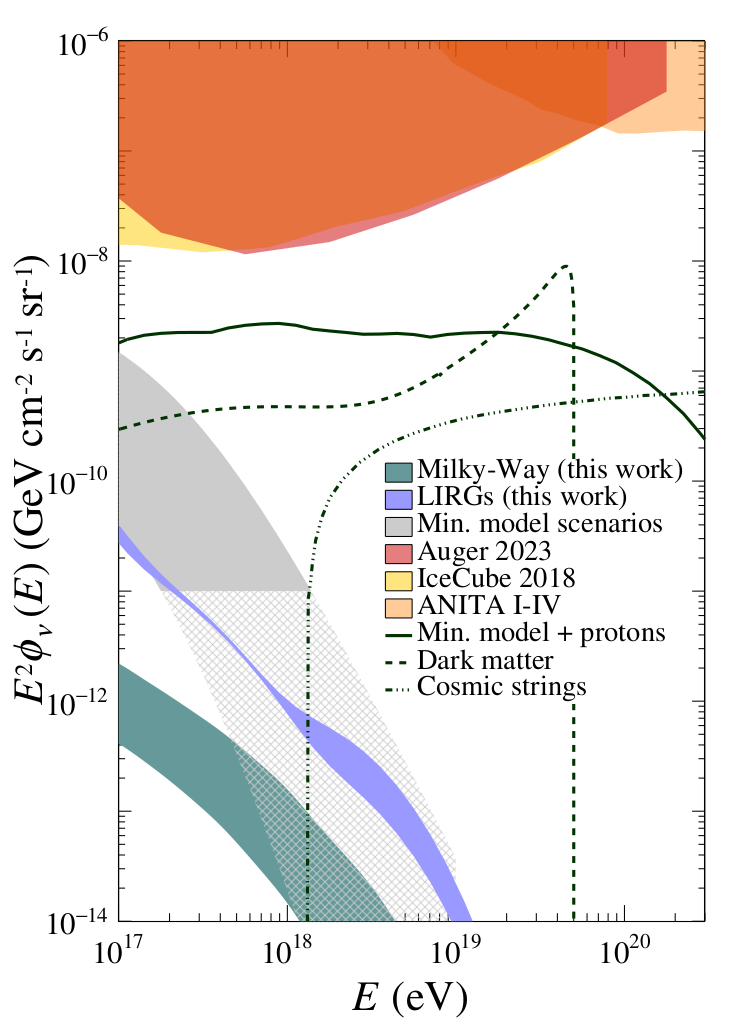
Figure : Energy flux of neutrinos (single flavor) expected from cosmic-ray interactions in the milky way (“Milky Way”) compared to those from the minimal model of cosmic rays escaping from LIRGs (“LIRGs”) or from various source environments that fit with the minimal model explaining the Auger data above 1018.7 eV (“Min. model scenarios”). Upper limits from Auger, IceCube and ANITA are reported on top. Also shown are energy fluxes expectations from a non-minimal model of cosmic rays with protons at UHE (“Min. model + protons”), a superheavy dark-matter scenario (“Dark matter”) and a phase transition one in the early universe (“Cosmic strings”).
By Antonio Condorellia, Olivier Delignya, Corinne Bératb, François Montanetb, Zoé Torrèsb
a Université Paris-Saclay, CNRS/IN2P3, IJCLab, 91405 Orsay, France
b Laboratoire de Physique Subatomique et de Cosmologie (LPSC), Grenoble, France
In an article published in ApJ, A. Condorelli and O. Deligny, as well as C. Bérat, F. Montanet and Z. Torrès from the LPSC, show that the fluxes of ultra-high-energy neutrinos inevitably produced by the interaction of cosmic rays as they escape from their sources or propagate through the universe remain too modest to be observable above 10^18 eV. The detection of neutrinos by current or future observatories would therefore reveal physics beyond the Standard Model or extreme particle acceleration phenomena with rigidities never observed.
The search for neutrinos with energies greater than 1017 eV is being actively pursued. Although normalization of the dominant neutrino flux is highly uncertain, a floor level is guaranteed by the interactions of extragalactic cosmic rays with Milky Way gas. This floor level is estimated to yield an energy flux of E2Φν ≈ 10-13±0.5 GeV cm-2 sr -1 s-1 at 1018 eV, where uncertainties arise from the modeling of the gas distribution and the experimental determination of the mass composition of ultra-high-energy cosmic rays on Earth. Based on a minimal model of cosmic-ray production to explain the mass-discriminated energy spectra observed on Earth above 5 x 1018 eV, , generic estimates of the neutrino fluxes expected from extragalactic production are also obtained. They generally exceed the aforementioned guaranteed floor. The prospects for detecting neutrinos above 1018 eV remain however challenging, unless proton acceleration to the highest energies is at play in a sub-dominant population of cosmic-ray sources or new physical phenomena are at work.









